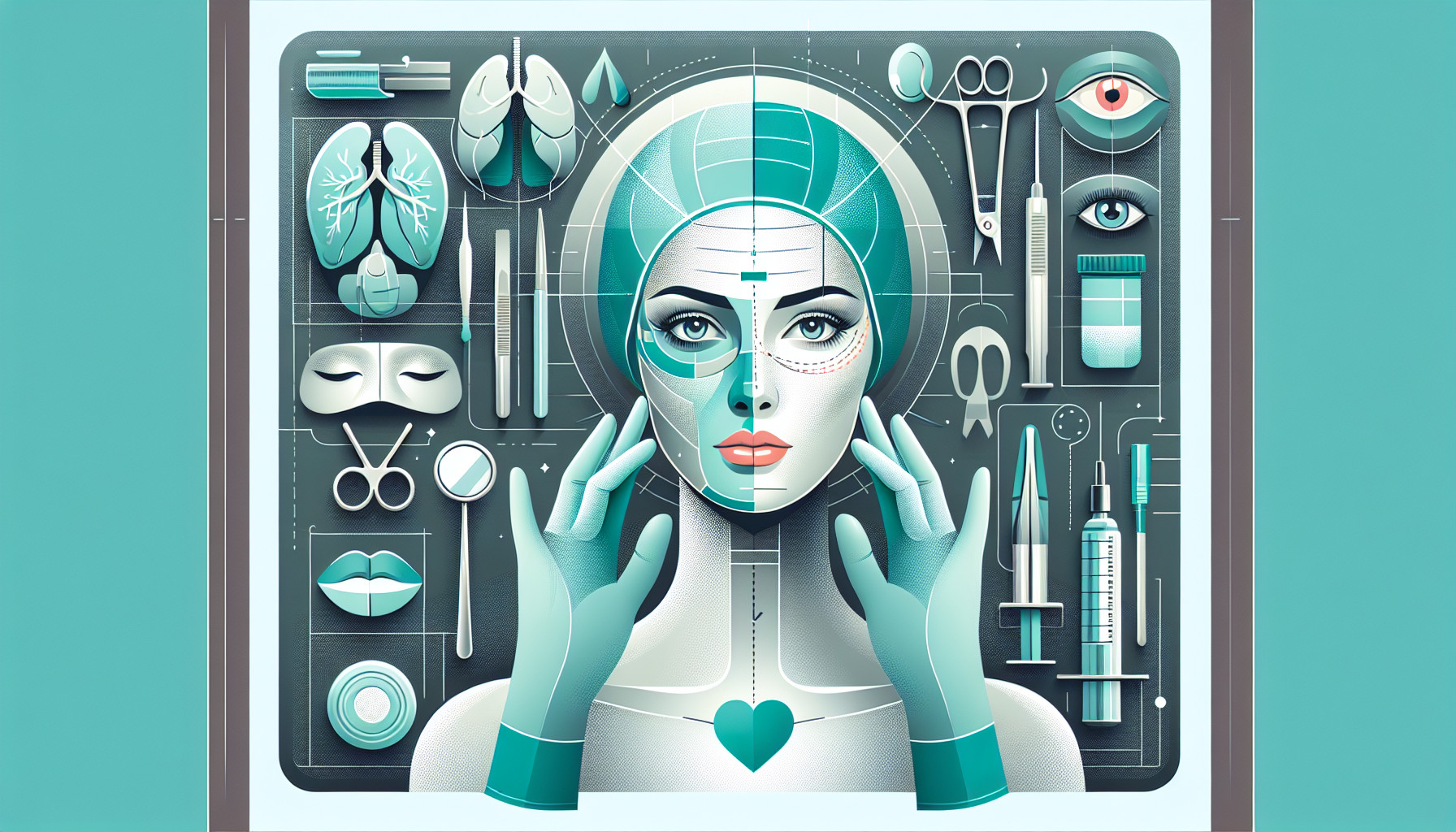Our Summary
This research paper discusses a surgical procedure known as subbrow blepharoplasty, which is commonly used in Asian populations to treat a condition where the upper eyelid skin droops over the eyelid crease (dermatochalasis) and forms a ‘hood’ on the outer half of the upper lid (lateral hooding). This surgery is performed under the eyebrow (subbrow) to help maintain the natural fold of the upper eyelid. The authors have for the first time used this technique on Caucasian patients with the same condition.
The study looks back at Caucasian patients who had undergone this surgery between January 2017 and June 2018. The procedure was slightly modified for these patients and the details of these modifications are discussed in the paper. The fifty patients who had the surgery were mostly men, with an average age of 71.4 years. The minimum follow-up time after the surgery was three months.
In some cases, the subbrow blepharoplasty was combined with two other procedures - an internal browpexy (eyebrow lift) and a periosteal fixation (a method to secure tissues). The patients’ satisfaction with the surgery and the surgical incision was evaluated. All the patients were happy with the results, and none reported any problems with the incision. The surgeon did notice mild redness in the scars of two patients at the three-month check-up, but this improved over the following year.
The study concludes that subbrow blepharoplasty could be a good alternative to the traditional upper eyelid surgery for older Caucasian patients experiencing moderate to severe drooping and hooding of the upper eyelid.
FAQs
- What is subbrow blepharoplasty and who typically undergoes this procedure?
- How was the subbrow blepharoplasty technique modified for the Caucasian patients in the study?
- What were the results of the study and were the patients satisfied with their subbrow blepharoplasty procedures?
Doctor’s Tip
A helpful tip a doctor might tell a patient about blepharoplasty is to follow post-operative care instructions carefully, which may include keeping the area clean, using prescribed eye drops or ointments, avoiding rubbing or touching the eyes, and attending follow-up appointments for monitoring and removal of stitches. It is important to follow these instructions to ensure proper healing and optimal results.
Suitable For
Patients who are typically recommended for blepharoplasty are those with moderate to severe dermatochalasis with lateral hooding, particularly in the upper eyelids. In this case series, Caucasian patients with these specific characteristics were recommended for subbrow blepharoplasty. This technique can help preserve the natural upper lid crease while addressing excess skin and hooding in the lateral half of the upper lid. Older patients, in this study with an average age of 71.4 years, may benefit from subbrow blepharoplasty as an alternative to classic upper lid blepharoplasty. Patient satisfaction with the surgical results was high in this study, with all 50 patients reporting satisfaction and no major issues with incision healing.
Timeline
Before undergoing blepharoplasty, a patient typically consults with a plastic surgeon to discuss their concerns and goals for the procedure. The surgeon will assess the patient’s eyelids and overall facial structure to determine if they are a suitable candidate for blepharoplasty. Preoperative tests may be conducted to ensure the patient is healthy enough for surgery.
On the day of the procedure, the patient will be prepped and given anesthesia to ensure their comfort during the surgery. The surgeon will then make incisions along the natural lines of the eyelids to remove excess skin, fat, and muscle. The incisions are carefully closed with sutures.
After the surgery, the patient will experience some bruising, swelling, and discomfort around the eyes. They will be given medications to manage pain and prevent infection. The patient will need to rest and avoid strenuous activities for a period of time as the eyes heal.
Follow-up appointments with the surgeon will be scheduled to monitor the healing process and ensure the best possible results. Patients are typically advised to avoid rubbing or putting pressure on the eyes and to protect them from sun exposure.
Over time, the bruising and swelling will subside, and the patient will begin to see the final results of the blepharoplasty. The incision lines will fade and blend in with the natural creases of the eyelids. Patients often report feeling more confident and satisfied with their appearance after undergoing blepharoplasty.
What to Ask Your Doctor
Some questions a patient should ask their doctor about blepharoplasty include:
- What are the risks and potential complications associated with blepharoplasty?
- What is the recovery process like and how long will it take?
- Will there be any scarring after the procedure and how can it be minimized?
- How long do the results of blepharoplasty typically last?
- Are there any non-surgical alternatives to blepharoplasty that I should consider?
- Can blepharoplasty improve my vision if I have sagging eyelids?
- How many blepharoplasty procedures have you performed and what is your success rate?
- Will I need to follow any specific post-operative care instructions?
- What type of anesthesia will be used during the procedure?
- Are there any specific pre-operative tests or evaluations I need to undergo before blepharoplasty?
Reference
Authors: Eid L, Tsirbas A. Journal: Plast Reconstr Surg. 2021 Mar 1;147(3):604-607. doi: 10.1097/PRS.0000000000007633. PMID: 33620928
